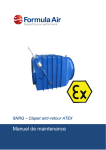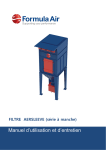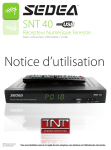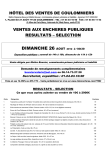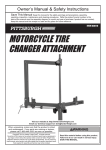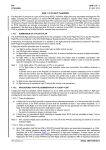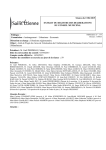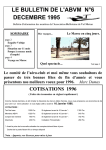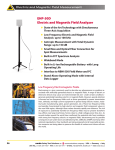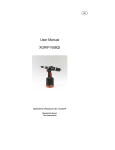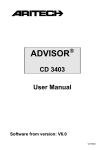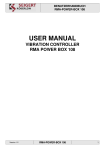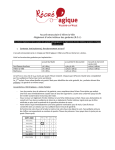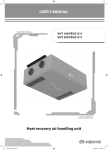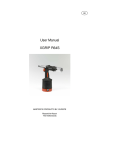Download ERGO extraction arms – Maintenance manual
Transcript
ERGO Extraction arms ERGO-M/Z ERGO-K/Z ERGO-L/Z ERGO-D/Z Maintenance Manual 1 Contents 1. How it works ........................................................................................................................................ 2 2. Technical Datasheets ........................................................................................................................... 2 3. Structure and Function ........................................................................................................................ 6 4. Assembly.............................................................................................................................................. 6 5. Installing the extraction arms .............................................................................................................. 7 6. Start‐up ................................................................................................................................................ 8 7. Use ....................................................................................................................................................... 8 8. Troubleshooting guide......................................................................................................................... 9 9. Maintenance and Repair ...................................................................................................................... 9 10. Safety ................................................................................................................................................... 9 11. Storage and Transport ....................................................................................................................... 10 12. Reservations of Producer ................................................................................................................... 10 13. Terms of Warranty ............................................................................................................................. 10 14. Spare parts ......................................................................................................................................... 10 2 1. How it works ERGO extraction arms are designed for capturing the welding dusts and gases and also fine dusts, directly at the emission source, in order to avoid expanding the impurities in the workspace and being inhaled by people. The arms are manufactured in hanging and standing versions. The extraction arms can work independently with an extraction fan, or in a group of devices connected to the main ductwork with a central fan. 2. Technical Datasheets Extraction arms are manufactured in different versions and sizes: Table No.1 type dimensions Dn [mm] ERGO‐M/Z‐1,5 L [mm] A [mm] weight B [mm] C [mm] [kg] 1773 673 472 2223 900 592 2287 1054 592 3032 1539 852 2306 907 582 3166 1527 822 ERGO‐L/Z‐4 3776 1907 1052 22,0 ERGO‐L/Z‐2 2286 907 579 19,0 3146 1527 819 3756 1907 1049 ERGO‐M/Z‐2 ERGO‐K/Z‐2 ERGO‐K/Z‐3 100 125 ERGO‐L/Z‐2 ERGO‐L/Z‐3 ERGO‐L/Z‐3 ERGO‐L/Z‐4 160 200 409 394 10,1 10,9 12,5 14,0 17,0 540 543 19,5 22,5 25,0 3 ERGO extraction arms in versions ERGO‐LL/Z and ERGO‐DL/Z are equipped with hoods with halogen spot‐ lights. A connection diagram is enclosed with the User’s Manual TR‐ERGO (230V; 50Hz). Dwg No.1 ERGO Extraction arms – dimension-conceptual drawings 4 Dwg No.2 Ranges of the extraction arms ERGO-M/Z-[1,5;2] ERGO-K/Z-[2;3] ERGO-L/Z-[2;3;4] ERGO-D/Z-[2;3;4] Table No.2 Ranges of the extraction arms type ERGO-M/Z-1,5 D [mm] 1241 E [mm] 1596 F [mm] 590 L [mm] 1773 ERGO-M/Z-2 1556 2001 759 2223 ERGO-K/Z-2 ERGO-K/Z-3 1600 2122 2058 2728 761 1009 2287 3032 ERGO-L/Z-2 ERGO-L/Z-3 ERGO-L/Z-4 1664 2224 2694 2025 2745 3348 718 984 1207 2306 3106 3776 ERGO-D/Z-2 1650 2007 709 2286 ERGO-D/Z-3 ERGO-D/Z-4 2252 2679 2781 3330 997 1200 3146 3756 5 6 3. Structure and Function ERGO extraction arms are assembled with different elements presented in the Dwg No.1: ● ● ● ● ● swivel two pipe segments (“I” and “II”) connected together with frictional joints gas springs – to equilibrate the segment weights shut-off damper suction hood with wire mesh avoiding the burning rests and chippings from getting in. The swivel guarantees a full rotation of the device around its vertical axis and therefore ensures an easy positioning in the requested point at the work station. The swivel and the pipe segments integrated together with hose sections (flexible connectors) along with the attached hood form a ventilation duct to extract the dust laden air. This configuration can be changed within the work range of the given type of the extraction arm. Additionally, the intake air volume can be adjusted by means of the shut-off damper (installed in the pipe segment “I”). Adequately adjusted frictional joints in co-function with the gas springs ensure a comfortable manoeuvring of the extraction arm. The suction hood can be equipped with a halogen spotlight to light up the workspace. In order to install the extraction arm on a wall or column use a wall bracket. It can also be suspended at the end of the RO-type extension arm. 4. Assembly ERGO extraction arms are delivered partly assembled in cardboard Boxes. Before the extraction arm is installed in the workplace – it is important to completely assemble it according to the enclosed instruction. The diameter and placement of the mounting holes in the bracket and in the arm swivel are the same. for ERGO-M/Z for ERGO-K/Z for ERGO-L/Z for ERGO-D/Z (Dn Ø100 mm) (Dn Ø125 mm) (Dn Ø160 mm) (Dn Ø200 mm) – 6 bolts M6x40 – 8,8 – 6 bolts M6x40 – 8,8 – 6 bolts M6x40 – 8,8 – 8 bolts M8x40 – 8,8 7 5. Installing the extraction arms – types ERGO-M/Z, ERGO-K/Z, ERGO-L/Z, ERGO-D/Z (hanging version) 1. Take out the ERGO extraction arm from the package and put it stably on an even surface. 2. Pull the arm segments apart until you obtain a 45º angle. 3. Bolt the swivel support to the plate of the lower joint (see detail “B”) 4. Fold in the loose fabric edge, at the end of the flexible hose – then sleeve the hose onto the swivel ferrule and secure it with a hose clamp. 5. Fasten the end of the gas spring with a screw to the plate of the lower joint — (see detail “A”). 6. Connect the upper segment II with the lower segment I using a flexible hose (following point 4). 7. Screw up the outer joint to the hood (see detail “C”). 8. Using a flexible hose, connect the lower segment I with the hood (following point 4). 9. The ERGO extraction arm is ready to be mounted on a wall bracket or onto a filtering unit. 8 6. Start-up How to start the device: ● Prior to work, start the extraction fan and make sure the ventilation discharge ductwork is functioning. ● Set the hood in the desired position: not more than 30 cm from the welding arc, and not less than 20 cm – as the welding chippings could affect the hood and additionally the hood suction could interrupt the protection gas shield (CO2, argon). It is important that the hood is effectively capturing the fume and does not cause any obstacle to the user. ● Adjust the intake air volume with the damper lever to eliminate the dust / fume most efficiently. ● The position of the hood and the damper lever can be changed many times during the work, so the user can adjust them best to the current needs. ● After the work is completed – the extraction arm can be left in the open position (operational state), or if it causes an obstacle – set the arm in the folded position ● Stop the extraction fan, if the device works in a ventilation system – close the appropriate shut-off damper. 7. Use The construction guarantees a safe and reliable functioning without continuous servicing or special handling. The adjustment of the ERGO extraction arm consists mainly in the 9 adjustment of the frictional joints. The frictional brakes are placed in each joint of the extraction arm and their function is to ensure balance and self-supporting properties for an easy manoeuvring during the operation. The adjustment of the frictional brakes is carried out by increasing or reducing the tension of the nuts upon the frictional elements. The brake adjustment in the following joints ought to be set in such a way that it guarantees the stability and self-supporting ability of the extraction arm (which is important to keep the stable arm position), but it may not cause any excessive resistance while the user is changing the arm position. Having completed the adjustment, tighten-up the counter-nut. The placement of the adjustment nuts is illustrated in the “ERGO Extraction Arms – Dimensional-conceptual Drawings” (Dwg. No1). 8. Trouble Shooting Guide 2. The extraction arm is always settling in the sam position. possible reason corrective action Improperly adjusted frictional brake. Increase the tension on frictional disks by tightening the adjustment nuts. The rotation axis of the arm is not positioned vertically. Carry out the positioning of the mounting flange of the ERGO extraction arm to set the rotation axis vertically. 3. Drop in the air suction ra along with increased noise level. Improper impeller rotation sense of the extraction fan. Change the phase connection sequence (only 3-phase motor). 1. problem The extraction arm keeps falling. 9. Maintenance and Repair The maintenance is to be executed periodically : ● In order to obtain appropriate suction efficiency of the suction hood, clean its surface and the inlet wire-mesh grill from the deposited dusts and impurities. ● In case the extraction arm is no longer self-supporting – undertake the adjustment of its frictional brakes (see point 5). ● Lubricate the swivel every 3 months using solid grease (lubrication nipple is located in the swivel flange). After 1 operational year submit the device to a technical revision and repair ● or replace the faulty elements. ● Clean the internal surfaces of the extraction ducts from the deposited impurities 10. Safety The ERGO extraction arms will not bring any risk under the condition they are firmly and correctly mounted to the wall or another structural element of the building. Unsure installing could result in an uncontrolled detachment of the device and cause serious risk to personnel / people in the vicinity. 10 Once the work finished, you may leave the extraction arm in the open position. If it should constitute an obstacle to personnel, or become a hazard, set in into the close position. Prior to installing check the load carrying capacity of the building structure. 11. Storage and Transport ERGO extraction arms have to be stored and transported in partly disassembled state in special packages. The devices ought to be stored in a dry and well ventilated area. During the transport / reloading protect the device from scratches, indents and pay attention that the markings and labels do not get detached. 12. Reservations of Producer A. It is unacceptable to install on the structure of the unit any additional elements that don’t belong to its normal construction or accessory set. B. It is inadmissible to install the ERGO extraction arm directly to the ventilation installation, as it is usually not constructed to carry such charges during the operational use of the device. C. Protect the flexible elements as well as the pipes of the suction duct from mechanical damage. D. Prior to installing check the load capacity of the wall or other building structure where the device shall be mounted. 13. Terms of Warranty The period of warranty for the purchased device is indicated in the “Card of Warranty”. The warranty does not comprise: ● ● Producer accepts no liability for any consequences following from the operationa use that is in contradiction to the purpose of application. Defects and damages arising during the incorrect use and in application that is inconsistent with the present manual, ● Mechanical and electrical damages being caused during improper storage and transport or incorrect maintenance, ● Structural modifications, or changes / adaptations introduced by the user on one’s own, are not permitted. Inefficiency following from the normal operational exhaustion. ● Infringement of the section 3 “Reservations of producer” of the User’s Manual and especially modifications undertaken by the user on one’s own shall cause the loss of warranty validity. 11 14. Spare parts For spare parts please contact Formula Air Group. Formula Air The Netherlands Formula Air Belgium Formula Air Baltic Bosscheweg 36 SX 5741 Beek en Donk The Netherlands Tel: +31 (0) 45 492 15 45 Fax: +31 (0) 492 45 15 99 Rue des Dizeaux 4 1360 Perwez Belgium Tel: +32 (0) 81 23 45 71 Fax: +32 (0) 81 23 45 79 Televizorių G.20 LT-78137 Šiauliai Lithuania Tel: +370 41 54 04 82 Fax: +370 41 54 05 50 [email protected] view Google Map [email protected] view Google Map [email protected] view Google Map Formula Air France Formula Air Est Agence France Formula Air France Agence Ouest Zac de la Carrière Doree BP 105, 59310 Orchies France Tel: +33 (0) 320 61 20 40 Fax: +33 (0) 320 61 20 45 2, rue Armand Bloch 25200 Montbeliard France Tel. +33 (0) 91 381 70 71 Fax +33 (0) 381 31 08 76 19a rue Deshoulières 44000 Nantes France Tel. +33 (0) 89 251 90 75 Fax +33 (0) 251 89 94 06 [email protected] view Google Map [email protected] view Google Map [email protected] view Google Map Formula Air France Agence Sud Air Formula Russia Formula Air Vietnam Chemin de Peyrecave 09600 Regat France Tel: +33 561 66 79 70 Fax: +33 567 07 01 09 Нижний Новгород Россия Tel: +7 (499) 609 23 54 Fax: +7 (831) 277 85 38 # 33, Lot 2, Den Lu 1 Hoang Mai District, Hanoi, Vietnam Tel: +84 (4) 38 62 68 01 Fax: +84 (4) 38 62 96 63 [email protected] view Google Map [email protected] View Google Map [email protected] www.vinaduct.com View Google Map NOTE : All drawings and references contained within this manual are non-contractual and are subject to change without prior notice at the discretion of the Formula Air group and its partners.












